Lightweight, Low Torque, Shielded and Sealed Plastic Bearings
Sealed & shielded plastic bearings prevent dirt and liquid getting into the bearing, where they will cause increased wear. They are also used to keep lubricant in the bearing to ensure it runs freely.
Whether a shield or a seal is used depends on the type of contaminant:
- Shields keep out larger particles. For over 1mm particles a shield would more generally be used.
- Seals keep out finer particles. To keep out things like sand and liquid, seals are more protective.
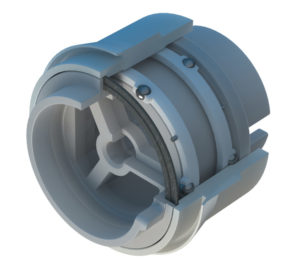
Other operating factors, such and speed and temperature will also affect which feature is used, or if any can be used at all. Shields and seals trap and increase heat within the bearing, which increases torque and drag, and wear rate. Applications that must operate in high temperatures, or at high speeds, generating heat, may find a seal or shield will trap heat and reduce performance and operating life in a similar way to debris ingress.
Shielded and Sealed Plastic Bearings: How We Do It
There is more than one way to seal a bearing…
At BNL we mould our plastic bearings, integrating shields or seals into the bearing design, to reduce component assembly times and costs. All our Industry Standard Bearing range have integrated shields.
Our custom plastic bearing designs use a variety of shield and seal designs, some integrated and some not, to meet individual product specifications. We use specially selected materials, to meet the demands of the specific application and its environment.
The benefits of BNL plastic sealed and shielded bearings are:
- Cost effective, and cheaper than steel equivalents
- Corrosion and chemical resistant
- No metal/tin used so they can be non-magnetic
- Lightweight
- The moulding process and integrated designs allow flexibility and reduced part count
- Less torque compared to metal and tin versions, even in contact seals
- Inherent noise-dampening characteristics of plastic compared to metal
- Controlled torque through design and integration
These are some types of bearing shield and seal designs we use in our plastic bearing products.
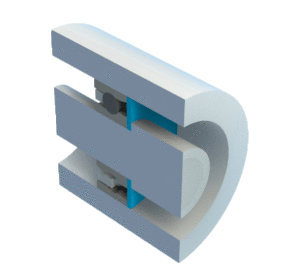 Contact and Non-contact Shields
Contact and Non-contact Shields
Contact shields and seals are in contact with both the inner and outer of the bearing, forming a barrier. Although they effectively prevent ingress of debris, heat is trapped in the bearing, and torque increases causing drag, so they are not suitable in high speed or high temperature applications.
Non-contact shields and seals are joined to either the inner or outer of the bearing and have a gap to allow heat to dissipate. This way the bearing stays cool and friction/torque does not increase. Debris can get in, but can also be dispersed through the gap.
Both non-contact and contact types will keep grease in the bearing to keep it lubricated. Neither are completely liquid proof, but full contact bearing shields can prevent the ingress of liquid for a certain amount of time.
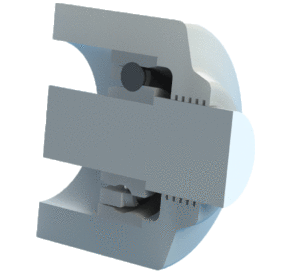
Gap Seals
As they sound, these have a small gap at the end of the seal to the inner or outer. If lubricant is used in the bearing, this can build up in the gap, forming a trap for debris on the outside and recycling the clean lubricant on the inside, which is pushed back into the bearing as it spins. It is an effective method for both keeping the bearing lubricated and preventing particles getting into the bearing. All BNL shielded bearings have a gap seal and we can design this to size for the DC and expected wear life of the application.
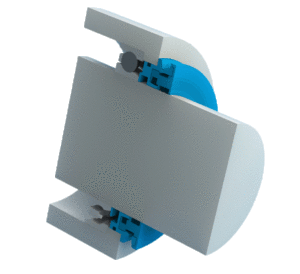
Labyrinth Seals
These seals are more effective than gap seals in preventing debris getting into the bearing tracks, as there is more pathway that particles need to travel through and more chance for them to be caught before getting into the tracks.
We use two types of design. A collector labyrinth seal is a clever feature that keeps the lubricant and debris separate, then ejects the debris back out of the bearing whilst recycling the lubricant. A protector labyrinth spins the contaminants away using a helical form designed into the labyrinth.
We design and integrate labyrinth seals into bearings for steering column applications, fire wall bearing solutions, photocopier and printer, mail handling and ATMs. They are very effective but not suited to applications that have a tight or small space for a bearing to be fitted, as they require some space for the labyrinth feature to be integrated.
Felt contact seals
Felt contact seals are simple but effective. The felt can be pre-soaked or will soak up escaping lubricant, so the felt then creates a filter or barrier to stop debris getting into the bearing. However, because of this, they can increase heat in the bearing, and therefore torque and wear.
We use these for applications where dust and small particles can cause a problem and for extreme environments where we can stack them together to give extra protection. They are not suitable when an increase in heat and torque can reduce the performance of the bearing.
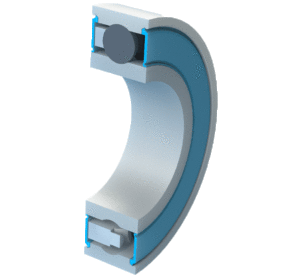 Lip Seals
Lip Seals
Lip seals can be spring or pre-loaded to help attain an effective seal. This is when the seal is designed to a greater dimension than the sealing gap and sprung against the surface it’s supposed to touch, creating the seal. A lip can also be used as a pressure seal, so that it becomes loaded when the pressure changes, pressing the lip against the surface until the source of pressure subsides.
Lip seals are effective at preventing the ingress of liquid and fine dust. They are often found in vacuum cleaners to prevent dirt and dust reducing suction, or in paper path applications, such as photocopiers and ATMs, where they protect the system from paper and toner dust. We also use pressure contact lip seals in firewall bearings for the automotive industry.
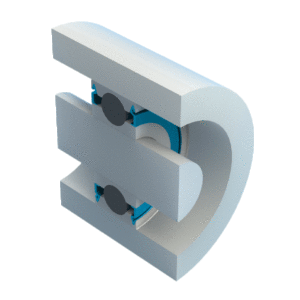
Metallic Sealing Washers
These are tin plate, preformed and preloaded, and placed inside or outside the bearing. Although they offer good, general protection, they are full contact and increase heat, friction and wear. We rarely use them as a solution – especially if we can integrate and mould contact shields and seals into our bearing races, saving component cost and assembly time.
Sealed Bearing Materials
We primarily mould our plastic bearings in acetal (POM) so our integrated shields are also made from acetal. However, we will utilise whichever materials will achieve the desired effect for our customer. We are not limited by the common materials used in off-the-shelf shielded and sealed bearings.
For seals, we often use rubber or thermoplastic elastomers (TPEs), which give the sealing properties of silicone but can be moulded, so we can still offer BNL’s signature integrated bearing designs. Within the TPE family there are a range of materials with different characteristics and we will always offer the best combination of material characteristics for an application. TPEs are very durable and are used in car doors and window seals, toys, toothbrushes and medical systems. We use additives to make TPE-based materials that can be used over a wide range of temperatures and environmental conditions. They have good wear resistance and low ‘creep’ (the amount of change a material experiences in position, shape or size after being placed under pressure or load).
Where are sealed and shielded bearings used?
We integrate some form of seal or shield into nearly everything we make; as they are a typical feature of many products, they can be overlooked as an important part of the bearing design.
They are used in many applications, anywhere dust, sand, debris or liquid needs to be kept out of the bearing. Below are a few product types that we have designed plastic shielded or sealed bearings for:
- Vacuum cleaners and accessories
- Photocopier toner cartridges
- Automotive fire wall bearings
- Automotive steering column bearings
- CCTV PTZ units
- Thermal imaging and satellite tracking units
- BNL’s Industry Standard Bearing range (shielded) – browse our range of series plastic bearings
Do you think a plastic shielded/sealed bearing might bring advantages to your product development?
BNL offer a machine tear down service, where we will examine your product for ways in which our plastic bearings can benefit the performance and efficiency of your product.
Are your shielded or sealed metal bearings over-specified and over-expensive?
BNL shielded and sealed bearings offer a lightweight and more cost-effective solution than steel for many applications. Only where the bearing must operate in a particularly harsh environment or under extreme loads, speeds and high temperatures would a plastic bearing not be suitable. Metal/steel equivalents are over-specified and overly expensive for many applications.
Ask an engineer about your sealing or shielding requirements to see if a better value plastic bearing option is suitable: asktheengineer@bnl-bearings.com




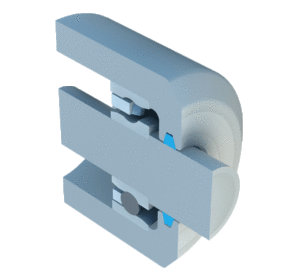

 Back
Back
